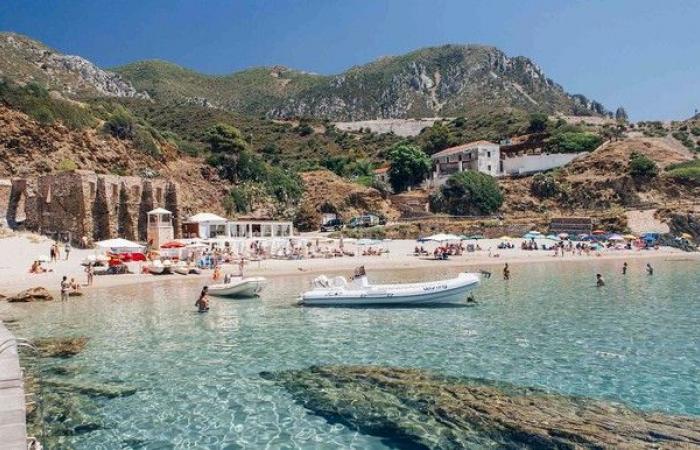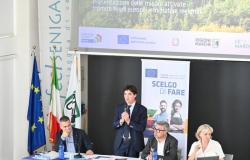In 2023, they were registered in hotel and non-hotel accommodation facilities in Sardinia 15.7 million visitors: a growth of plus 6.5 percent compared to 2022, over half a million more than what was recorded in 2019. The recovery in terms of arrivals was even faster, which recorded growth of plus 7.7 percent compared to 2022, reaching a level 6.7 percent higher than the pre-pandemic year.
During 2023 the tourism it was one of the few sectors capable of boosting Sardinia’s economy thanks to the full recovery of pre-pandemic levels. This can be seen from a dossier from the Research Centre Cna Sardinia which analyzes the latest Istat estimates for 2023, obtained from the data contained in the “Alloggiati Web” portal of the State Police.
The analysis refers only to official structures and does not consider the contribution to the regional economy provided by so-called residential tourism, that is, that of second homes, holiday homes and B&Bs managed in a non-entrepreneurial manner. Cna estimates indicate that this real tourist niche is on the rise, thanks to the driving force of the so-called sharing economy, almost equals the official tourism numbers. If we limit ourselves to international flows, indications in this regard come from the sample surveys conducted by the Bank of Italy on international travelers arriving on the island from the main airports and ports; based on these estimates, during 2023, around 14.1 million foreign presences were recorded in Sardinia – regardless of the type of accommodation – compared to the 7.6 million recorded by Istat.
Tornado ai official data, in the last two years it has been above all Italian flows that have driven the dynamics of regional tourism; already in 2022, in fact, the number of compatriots arriving on the island had exceeded the 2019 level, with around 1.82 million arrivals and almost 8 million presences, numbers which improved slightly during 2023 (+4, 2 percent arrivals and +1.3 percent attendance). The recovery of international flows has been slower, partly due to the reduction in the number of airport connections with the main European airports and the increase in travel costs experienced in the last two years – as indicated by the booking simulations conducted annually by the Cna . All things considered, compared to 2019, around 150 thousand foreign arrivals and one million presences were missing in 2022. In 2023, however, the growth in the international tourist presence on the Island was exceptional, equal to over +13 percent both in terms of arrivals and in terms of presences, thus completing the full recovery of pre-pandemic levels. As regards the current year, despite the difficult national and international situation, the data on bookings in accommodation facilities on the island are positive. Based on the numbers provided by the operators, at the end of the first quarter of the year (see for example the AlbergatorePro reports) the percentage of rooms in hotel facilities already booked was higher than that recorded in the same period of 2023, and this leaves well hope for the summer season.
According to the Cna, the recovery of the tourism sector was certainly fundamental in supporting the island’s limping economy, and yet, the comparison between the different Italian regions suggests that in Sardinia there are still large margins for growth. Firstly, the island has lost two positions in the national ranking in terms of number of annual presences compared to 2019, surpassed by Liguria and Sicily; furthermore, in the last two years the growth recorded has been lower than that of some similar regions, such as Puglia, Sicily or Abruzzo.
“On the other hand, if we extend the field of analysis to a set of European regions that compete with Sardinia to attract tourist demand in the Mediterranean area (Crete, Algarve, Puglia, Corsica, Croatia, Malta, Sicily, the Balearics, Calabria and Cyprus) – we read in a note – we find that the just over 3.4 million arrivals recorded in the island’s accommodation facilities in 2022 represented just 5.6% of the total arrivals in these regions; the figure for Sardinia, in particular, pales in comparison to the over 12 million tourists who arrive annually in the Balearics or in Adriatic Croatia, but is modest even when compared to the almost 5 million in Sicily or the Algarve, or the 6 million in Crete. The distance is also evident if you look at the attendance data: in Sardinia in 2022 the official structures hosted travelers for around 14.7 million nights – 5.1% of the total; in Croatia there were 86 million overnight stays; 65.4 million in the Balearics; 32 million in Crete; 21 million in the Algarve”.
“But if you look at theaccommodation offer official it is clear that something is wrong; with its 222 thousand official beds, Sardinia is in fact on a similar or higher level to that of Crete or the Algarve, regions which record almost double the number of annual presences. Even looking at the accommodation capacity of the Balearics, around 462 thousand beds, the difference with Sardinia is not even remotely comparable to that recorded in terms of presences (65 million compared to the official 15 million in Sardinia)”, continues the note.
“Tourism in Sardinia has great unexpressed potential and there is a huge work space still to be filled,” they comment Luigi Tomasi and Francesco Porcu, respectively president and regional secretary of the Cna Sardinia – it is a question of overcoming the international image strongly characterized and centered on the stereotype of the seaside holiday which probably represents one of the limits of the Sardinian offer model which, not surprisingly, concentrates the flows of travelers in the a few summer months. Based on a study carried out in 2017 by Cna Sardinia (“Economy and Tourism: models compared, Sardinia and its competitors”), well-being and health are by far the areas in which Sardinia could be most competitive, followed by tourism historical-archaeological and sports tourism”.






